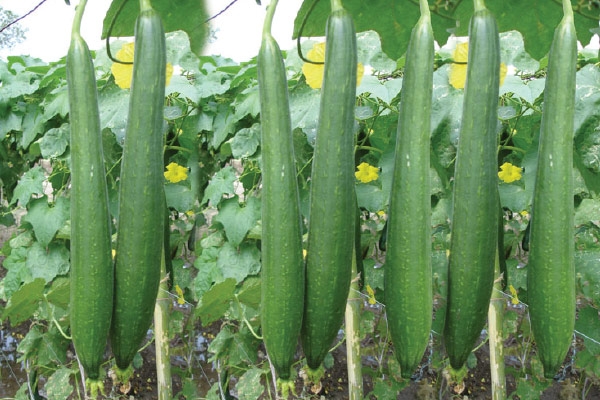Pusa Chikni: Early maturing variety. Suitable for rainy as well as spring season. Ready to harvest in 100-110days. Fruits are of dark green color. Gives average yield of 45-50qtl/acre.
Phule Prajkta: Developed by Mahatma Phule Krushi Vidhyapith. Gives first picking in 52days after sowing. Gives average yield of 50 to 60qtl per acre.
Pusa Sneha: Suitable for cultivation in summer as well as rainy season. Gives average yield of 50qtl/acre.
Pusa Supriya: Ready to harvest in 90-100days. Gives average yield of 40-48qtl/acre.
Other state varieties:
Azad Taroi 1: Early harvesting variety with dark green fruits. Gives average yield of 50-60qtl/acre.
Azad Taroi 2: Suitable for kharif and summer sowing. Gives average yield of 55-65qtl/acre.
LA 33: Long and oval shape fruits.
Rani: Suitable for kharif and summer season sowing. Gives average yield of 52-64qtl/acre.
Maharani: Ready to harvest in 110-140days. Suitable for kharif and summer season sowing. Gives average yield of 52-65qtl/acre. Fruits are shinning with attractive red color.
Java: Ready to harvest in 110-120days. Gives average yield of 55-70qtl/acre.
Harita: Hybrid, ready to harvest in 90-100days. Dark green fruits with tender shape. Gives average yield of 60-80qtl/acre.
Indam 65: Hybrid. Ready to harvest in 90-95days. Dark green fruits with cylindrical shape. Gives average yield of 60-80qtl/acre.







